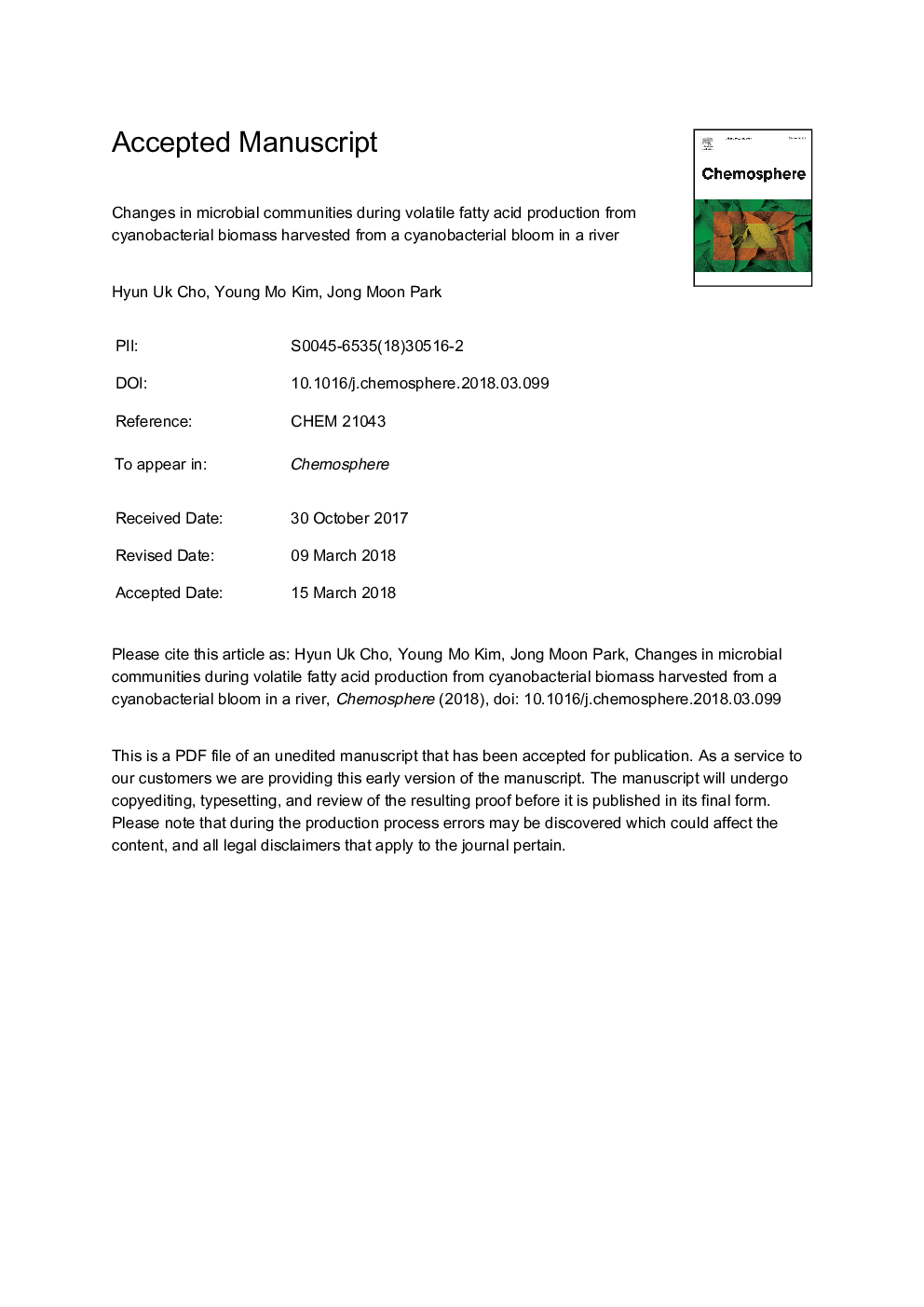| Article ID | Journal | Published Year | Pages | File Type |
|---|---|---|---|---|
| 8851546 | Chemosphere | 2018 | 25 Pages |
Abstract
Volatile fatty acid (VFA) production, utilization of soluble organic compounds, and associated microbial consortia were investigated after different pretreatments (untreated, alkaline, and thermal-alkaline) using cyanobacterial biomass as a substrate. Compared to the untreated control, soluble carbohydrate concentrations were almost the same after alkaline and thermal-alkaline pretreatments, but soluble protein concentration was 1.58 times higher after alkaline pretreatment and 1.81 times higher after thermal-alkaline pretreatment. However, the highest degree of acidification was obtained after alkaline pretreatment (55.36â¯Â±â¯3.00%). Microbial communities in the untreated control differed only slightly from those after thermal-alkaline pretreatment, but were clearly distinct from those after alkaline pretreatment. After alkaline pretreatment, protein-utilizing bacteria became relatively predominant. These results revealed the relationships between efficiency of VFA production and the shift in microbial community.
Related Topics
Life Sciences
Environmental Science
Environmental Chemistry
Authors
Hyun Uk Cho, Young Mo Kim, Jong Moon Park,
